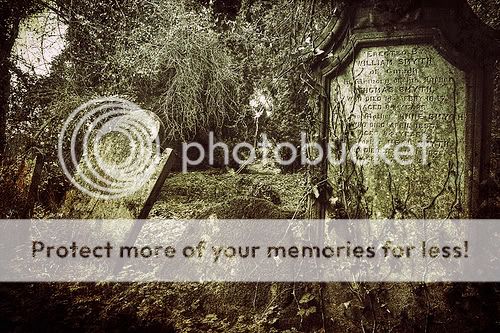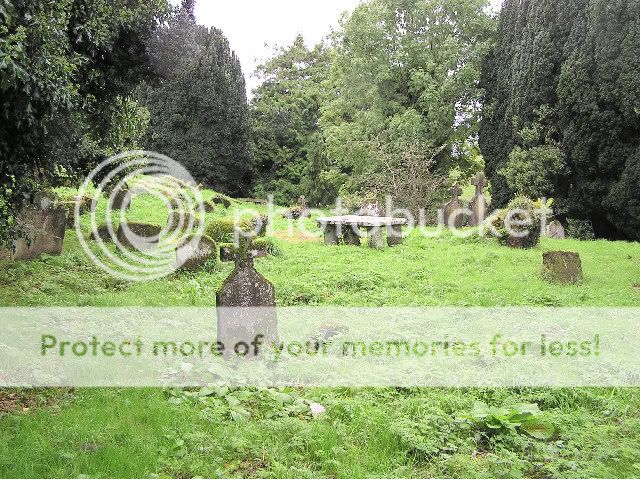This old
cemetery and ruined church is now the only monument of any great
antiquity that links the local parish to pre-reformation times. It
is said that the church was demolished by Cromwellian troops who
fired their cannon from the present-day Cannon hill area of Omagh.
Indeed, local farmers are said to have dug up cannon balls while
ploughing nearby fields. It is most likely that the present walls
of the ruins mark the site or are the old walls of the ancient
Catholic Church which was partly rebuilt in the Plantation period
for Protestant worship and at this time was Church of Ireland
(Anglican). Although the native Irish, in the most part, ceased to
bury their dead here after the Plantation, Catholics were allowed
the right of burial but only under certain conditions. Thus, the
priest was not allowed to wear a surplice and crosses were not
permitted to be erected on the grave. In 1902 the Board of
Guardians forbade the use of this cemetery but later a section was
added for the present congregation. The Church of
Ireland Church was later moved to Church Street in 1777 and
although the present building is on the same site Saint Columbas
Church was rebuilt in 1871 and remains much the same today apart
from a few minor alterations.

A writer from Omagh wrote this about the graveyard:
“The Old Graveyard where the gateway was closed with
concrete and stone long before my time, and the dead sealed off
forever. There’s a sort of stile made out of protruding
stones in the high wall and within- desolation, a fragment of a
church wall that might be medieval, waist-high stagnant grass,
table tombstones made anonymous by moss and licheas, a sinister
hollow like a huge shellhole in the centre of the place where the
dead, also anonymous, of the great famine of the 1840’s were
thrown coffinless, one on top of the other. A man who went to
school with me called that the hold of the navel of nothing and to
explain in gruesome detail why and hw the earth that once had been
mounded had sunk into a hollow…..Impelled by a passion for
history, I decided to clean all the table tombstones in old
Drumragh and recall the nameless and oblivion the decent people who
where buried there. It was a big project. Not surprisingly it
was never completed, never even properly commenced, but it brough
us one discovery: that one of the four people, all priests,
buried under a stone that was flat to the ground and circled by
giant yews was a MacCathmhaoil (you could English it as Campbell or
McCarvill) who Hs in history been known as the Sagart Costarnocht
because he went about without boots or socks, and who had in penal
days proscribed to catholiscism had said Mass in the Open air at
the Mass Rock on Corraduine mountain……..he had read
the Mass one Sunday at the rock on Corra Duine and watched, in
glory on the summit like the Lord himself, as the congregation
trooped in over the mountain from the seven separate
parishes”
Written by Benedict Kielly taken from Irish writing in the
twentieth century: a reader By David Pierce
Alice Milligan also a writer from Omagh (daughter of Seaton
Milligan), who was a prominent Gaelic League during the League s
heyday in the early 1900s was buried here in 1953. Her friends
included O Donovan Rossa, Douglas Hyde and Roger Casement. She was
one of a small group of Protestant Nationalists, which included
Parnell, Yeats and Ethna Carbery, and one of the most politically
aware Irish women of the early 20th century. Alice was born
into a Methodist household with parents who favoured the union with
Britain, however she grew up with a completely different
mindset. Perhaps this controversial standing is one of the
reasons that her fame outlasted her fathers. Her father was also a
fairly famous writer however I could find little about his
writings.
The
cache is situated outside the graveyard so there is no need to
enter it, but we highly recommend taking a look, but make sure its
during the daytime as it is horror movie like!

Visit the Geocaching Ireland discussion
forum HERE